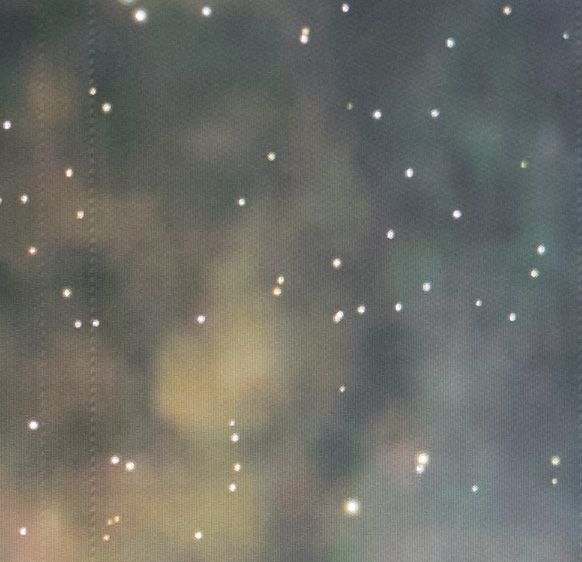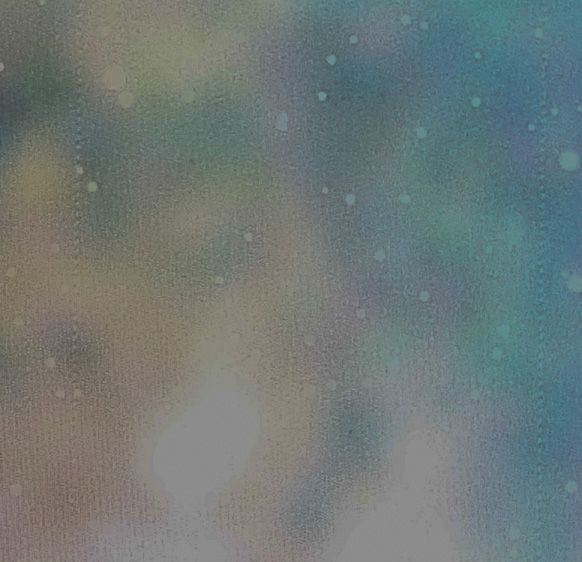Did you catch the Milky Way in the IoW?
Not a chance... too busy! Managed to take a few photos on one day, but only of landscapes. Tucked up in bed by the time it was dark enough for astrophotography... early starts on most mornings to get out walking. Think I must have walked most of the island!
Sumitra, thanks for the tips. My camera (Canon 650D) has a silly high ISO maximum claim at 25,600 which apparently is the highest any canon model have gone including the new Mach III. But in practice, I am still yet to figure out what its useful ISO maximum is. Probably 1600-3200. However, it has been commended for relatively low noise at high ISO levels. This was a good comparison review to a popular Nikon 3200 camera
http://www.cameralabs.com/reviews/Canon_EOS_Rebel_T4i_650D/high_ISO_noise.shtml
But as you say, I'll try different settings but I want to try get it right as first time as possible as I dont get a limited time window at the sports ground. So I'll probably try 1600 first 🙂
Oh I forgot to consider one more thing, the moon...I dont suppose it will be worthwhile doing a milkyway shot if even a crescent moon is up?
Sumitra, thanks for the tips. My camera (Canon 650D) has a silly high ISO maximum claim at 25,600 which apparently is the highest any canon model have gone including the new Mach III. But in practice, I am still yet to figure out what its useful ISO maximum is. Probably 1600-3200. However, it has been commended for relatively low noise at high ISO levels. This was a good comparison review to a popular Nikon 3200 camera
http://www.cameralabs.com/reviews/Canon_EOS_Rebel_T4i_650D/high_ISO_noise.shtml
But as you say, I'll try different settings but I want to try get it right as first time as possible as I dont get a limited time window at the sports ground. So I'll probably try 1600 first 🙂
Oh I forgot to consider one more thing, the moon...I dont suppose it will be worthwhile doing a milkyway shot if even a crescent moon is up?
Sumitra, thanks for the tips. My camera (Canon 650D) has a silly high ISO maximum claim at 25,600 which apparently is the highest any canon model have gone including the new Mach III. But in practice, I am still yet to figure out what its useful ISO maximum is. Probably 1600-3200. However, it has been commended for relatively low noise at high ISO levels. This was a good comparison review to a popular Nikon 3200 camera
But as you say, I'll try different settings but I want to try get it right as first time as possible as I dont get a limited time window at the sports ground. So I'll probably try 1600 first 🙂
Edit: post wasnt allowing any external links, not important anyway
Oh I forgot to consider one more thing, the moon...I dont suppose it will be worthwhile doing a milkyway shot if even a crescent moon is up?
Think I must have walked most of the island!
Wow!! Impressive! 🙂
Never mind Astrophotography, you can marvel at my milky way until you get yours :p 🙂
Tej - I'd still suggest you try other combinations if you have little chances of going back, otherwise you'll be disappointed. That way you can see what works and what doesn't. It's only a couple of extra minutes.
Just a thought - my skies here are darker than those in London - especially with me pointing towards the sea, and with 1600, I got very little...
Again, depends what you are trying to do, I'd not suggest doing every astrophotos in ETTR as it is not necessary and has a lot of noise, but if the objective is to actually show a Milky Way, then the answer to what a 'useful' ISO changes... If you have such a huge ISO, I'd give it a go just to compare with the other settings. You can clean up the noise in post processing.
My 2 pennies anyway
My camera (Canon 650D) has a silly high ISO maximum claim at 25,600
I really wouldn't bother with ISO settings this high... there will be a huge amount of noise, even with the noise reduction features on the camera set on.
I've seen images on the 650D at ISO 6400, and you can see chroma noise (i.e. colour fluctuations) in dark areas of the image. Not very nice. Bottom line is that ISO 3200 is probably the maximum usable level... and for noise-free, don't go beyond ISO 1600.
{EDIT} Sumitra, with the Canon 70D, you could probably push to ISO 6400 or 12800 without too much problem.
Bottom line is that ISO 3200 is probably the maximum usable level… and for noise-free, don’t go beyond ISO 1600.
Hi Mike - don't you see more noise in the ISO 1600? http://www.lonelyspeck.com/the-milky-way-in-los-angeles-light-pollution/
I'm looking at mine at 1600 and they are not so pretty... Well unless I stack them.
don’t you see more noise in the ISO 1600
I really think it depends on the camera. Higher end cameras like the 5D, plus, to an extent, the 60D, 70D, 6D and 7D are more than capable of going to higher ISOs, and then ETTR makes sense.
I'm not convinced that this is feasible with lower end DSLRs. Happy to be proved wrong though!
I’m not convinced that this is feasible with lower end DSLRs. Happy to be proved wrong though!
Oh right - I thought you were making more of a general comment in all cases. Then I would also agree. But I don't know what the 650 is.
I think that it's important to have a fast lens to do ETTR. I would have had better results I think.
I will upload my ISO1600 and my ISO12800 side by side in a bit so you can compare. I'll finish processing one now.
So here for you to compare ETTR ISO 12,800 30sec with non ETTR ISO 1,600 15sec Ceteris Paribus (including the level of LR5 torture)
ETTR ISO 12,800 30sec
 IMG_7711.jpg by Sumitra_S, on Flickr
IMG_7711.jpg by Sumitra_S, on Flickr
ISO 1,600 15sec
 IMG_7707.jpg by Sumitra_S, on Flickr
IMG_7707.jpg by Sumitra_S, on Flickr
Both have their benefits but I much prefer the ETTR one - I think the other one is way too noisy.
Thoughts welcome!
PS I will try to stack the ISO1600 later on after work and show you what it gives.
Both have their benefits but I much prefer the ETTR one – I think the other one is way too noisy.
Thoughts welcome!
I completely agree with you, but your Canon 70D is capable of exposures up to ISO 12800. Lower end DSLRs would not be capable of this without introducing a huge amount of noise.
Just for a bit of fun, and cause I wanted a break from writing documentation (oh, my favourite job), I thought I'd do a little experiment with my Fujifilm X-T1. This is one of the cameras that is recommended by the website that you've linked to, and is a relatively new model, capable of high ISOs. However, I don't like to push it beyond ISO 6400... and this is why...
Given that it's still light outside, I've had to make to with exposures of the Milky Way from the Sky Safari app on my computer screen! But it serves the same purpose... 🙂
So, here is an exposure at ISO 1600:

OK, not bad... some noise, but could be taken out in post-processing.
Now, ISO 6400, overexposed by 3 stops and then taken back 3 stops in post-processing (i.e. a classic ETTR):

Interesting... less noise apparent and a better contrast. As I say, this camera is perfectly capable of ISO6400.
Now, finally... ISO25600, overexposed as before and taken back in post-processing (ETTR):

Arrrgggghhhh!!!! Oh my God!!! Not even post-processing noise reduction will clean up that mess! The truth is that this camera is simply not capable of providing useful images at such a high ISO. Some cameras can produce usable images at these ISOs and beyond (some at over 100,000 ISO)... but my camera isn't one of them.
For Tej's 650D, I doubt that anything will be usable beyond ISO 3200... but, as you say Sumitra, you've got nothing to lose (other than the exposure time!) by trying it out.
Haha 🙂
Mike I am being distracted too!!
Interesting shots to compare! The last one is quite dreadful! 🙂
When I suggested to try all ISOs to compare, it's because I did not know the capacity of the EOS650D. I was disappointed not to push my camera fully the first time I went to the Windmill, but I could go back to try again.
Here what the ISO 1,600, 15sec look like stacked! Braian - I know you more partial to those, so I hope you like it!
ETTR:
 IMG_7711.jpg by Sumitra_S, on Flickr
IMG_7711.jpg by Sumitra_S, on Flickr
STACKED:
 2014-08-23 Milky Way Stacked.jpg by Sumitra_S, on Flickr
2014-08-23 Milky Way Stacked.jpg by Sumitra_S, on Flickr
The stacked image has significantly less noise and also has better contrast. With the stacked image, I suspect you could push the levels and curves a little further to tease out more detail from the Milky Way if you wanted to.
However, I'm not keen on what it's done to the foreground objects, despite what the impressionist art fans say 😉 . It's too distracting for me... I'm no longer sure what the subject is. To me, stacked images are better used when you are photographing the sky only.
